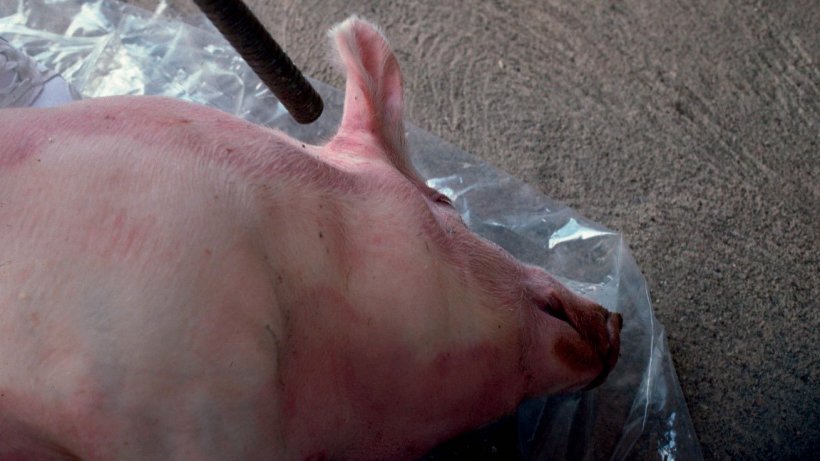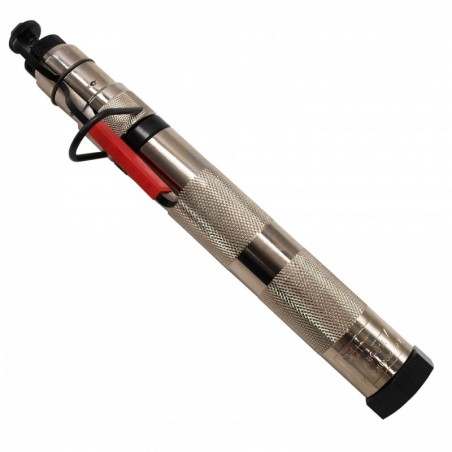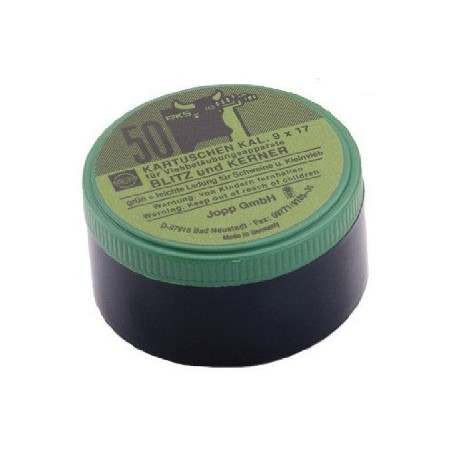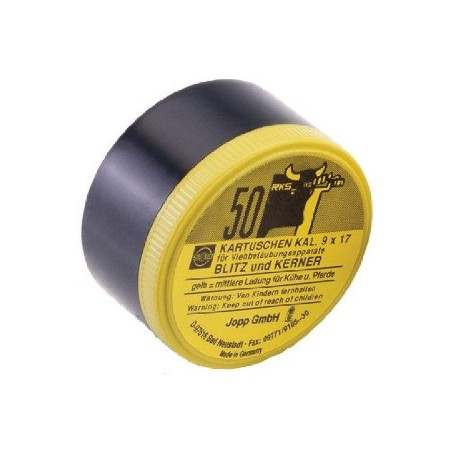Within the commercial pig farm, it is necessary due to injury, infection or physical abnormality to euthanase pigs on farm. The need may arise for reasons of animal welfare – to relieve or avoid suffering - for food safety reasons (e.g. multiple abscessation) or for economic reasons where the pig will not be viable to raise to slaughter weight or be suitable to transport.
The overriding considerations are that euthanasia is carried out humanely and safely.

Captive bolt humane stunners are the most common implements used but in larger growing pigs and adults they do not kill; they render the pig unconscious. Further action is needed to ensure the pig is dead.
The site of shooting is in the midline at the point where the lines cross, joining the base of the ear with the medial canthus of the opposite eye. The pig must be restrained on a noose, and the gun must be held firmly against the skull perpendicular in both planes. In a mature sow or boar, it is worth aiming 1cm to the side of the midline to avoid the frontal symphysis.
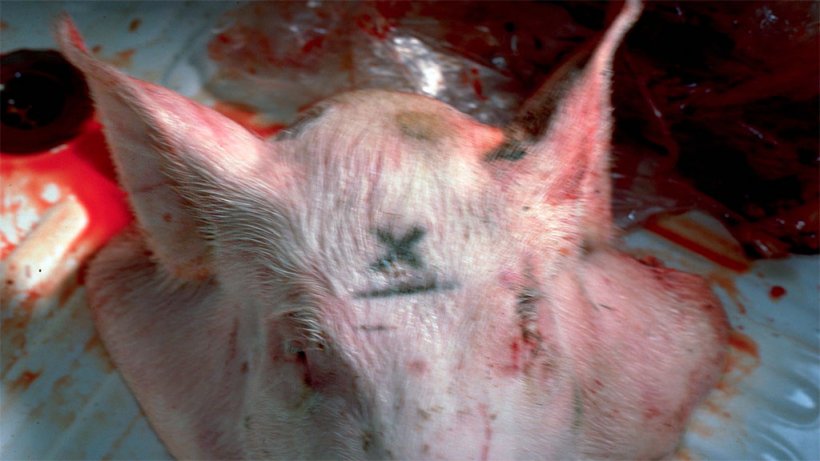
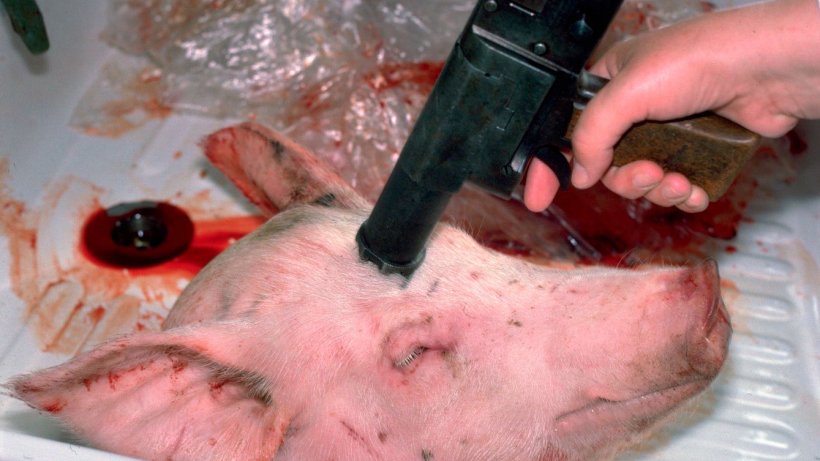
Unlike cattle or sheep, pigs convulse after shooting, even though unconscious; wait for up to 60 seconds for this to subside before pithing. This involves inserting a rod – a specific pithing rod can be used but an AI catheter works just as well – into the hole in the skull to destroy the base of the brain. Do not stand between the pig’s legs as further convulsions are likely, causing injury. Stand behind the pig’s shoulders to insert the rod. An alternative to pithing is exsanguination by severing the carotid arteries with a sharp knife. Verify death by loss of the palpebral reflex.
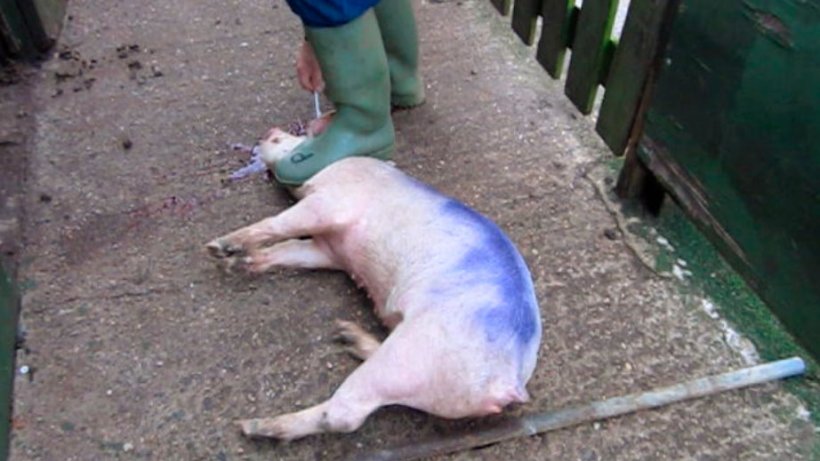
For large animals alternatively use a 12 bore shotgun at close range (10cm). Use in the same location as the captive bolt, from behind the ear aiming at the opposite eye or the reverse of this. Do not use a shotgun in confined spaces or on a recumbent pig on a concrete floor. The shotgun obviates the need for pithing.
